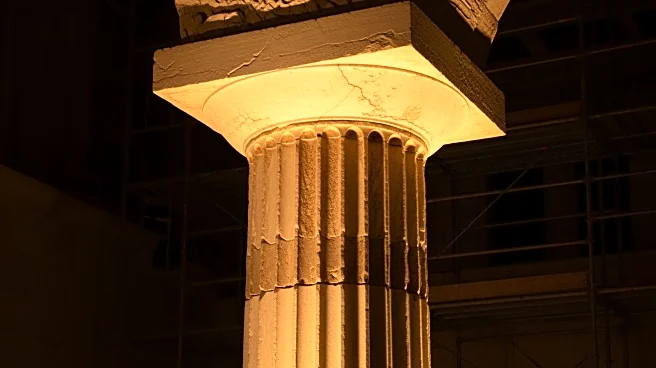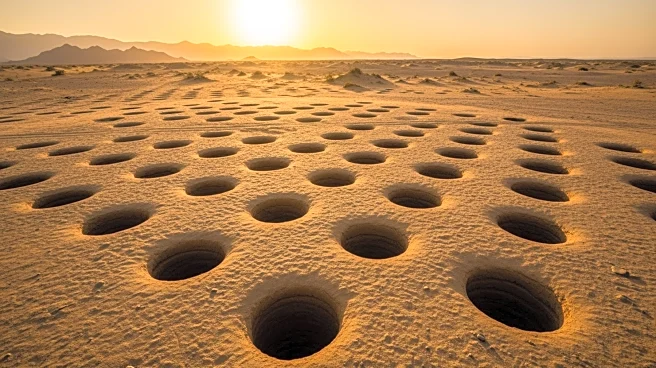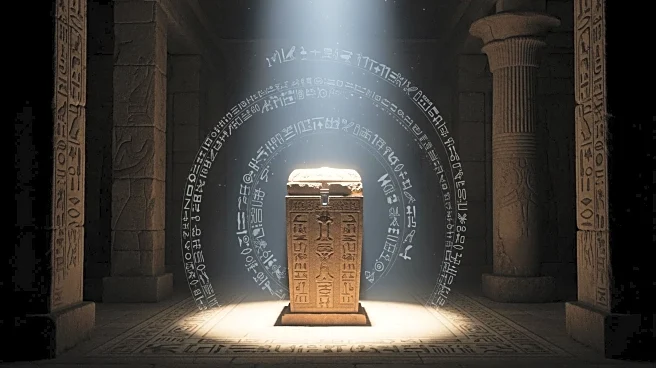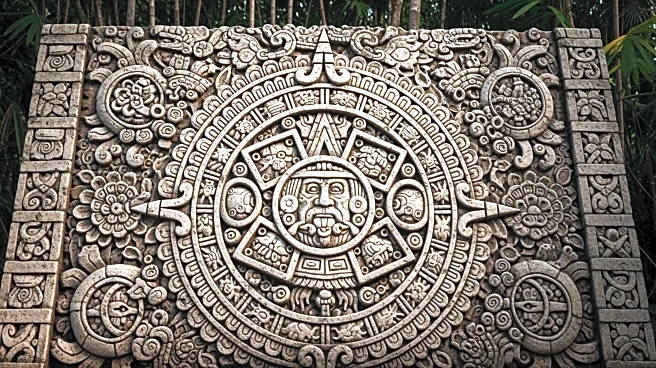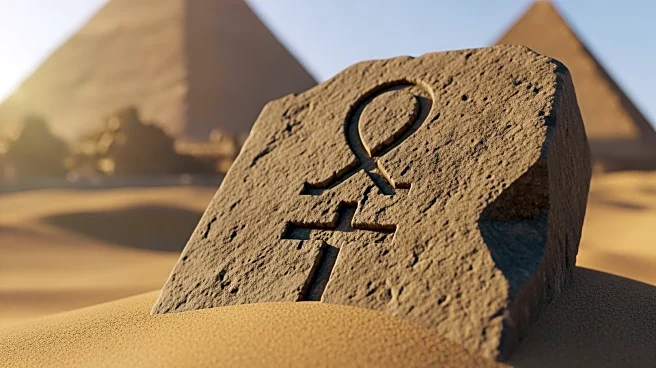What's Happening?
A recent study has shed light on the purpose of the 'band of holes' site in Peru's Pisco Valley, consisting of approximately 5,200 holes. The site, constructed between A.D. 1000 and 1400, was likely used as a marketplace and tribute collection site under
the Chincha Kingdom and later the Inca Empire. Researchers used drone technology to analyze the layout of the holes, revealing mathematical patterns similar to Incan khipus, which were record-keeping devices. The study suggests the holes were organized into sections possibly linked to different social groups for tax and commodity redistribution. Archaeologists first recorded the site in the 1930s, but little work has been done since due to its isolation and lack of development threats.
Why It's Important?
The findings provide significant insights into the economic and social practices of ancient Andean civilizations. Understanding the site's function as a marketplace and tribute collection point highlights the complexity of pre-Hispanic trade and accounting systems. This research expands knowledge of indigenous accounting practices and barter markets, which were prevalent in the Andes. The study also underscores the importance of preserving archaeological sites to uncover historical economic systems that shaped societies. The implications extend to modern understanding of trade and social organization in ancient cultures, offering a broader perspective on the evolution of economic practices.
What's Next?
Further research may focus on detailed analysis of the site's layout and comparison with other similar sites to deepen understanding of ancient Andean economic systems. Archaeologists might explore the potential connections between the site and other regional trade networks. Preservation efforts could be prioritized to protect the site from future threats, ensuring continued study and discovery. Additionally, the findings may prompt discussions on the integration of indigenous knowledge systems into contemporary economic models.
Beyond the Headlines
The study raises questions about the ethical considerations of preserving and studying ancient sites. It highlights the cultural significance of indigenous practices and the need to respect and integrate these insights into modern understanding. The research may influence cultural heritage policies, emphasizing the importance of safeguarding historical sites for future generations.




